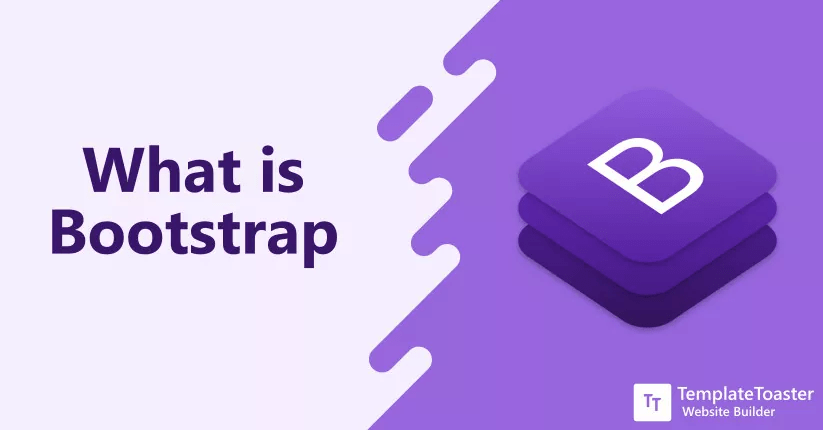Table of Contents
What is Bootstrap?
Bootstrap is a free, open-source front-end framework for designing websites and web apps. It was developed by Mark Otto and Jacob Thornton on Twitter to promote stability in internal devices. Bootstrap includes HTML and CSS-based design templates for typography, forms, buttons, tables, navigation, models, and more, as well as JavaScript plugins. See the Bootstrap Guide for Beginners to Get Started. See also: Frameworks and fronts.
Early start
Bootstrap, originally named Twitter Blueprint, was developed by Mark Otto and Jacob Thornton at Twitter as a framework to encourage consistency across internal tools. Before Bootstrap, different libraries were used for interface development, which led to inconsistencies and high maintenance burden. According to Twitter developer Mark Otto:
A super small group of developers and I got together to design and build a new internal tool and saw an opportunity to do something else. Through that process, we saw that we made ourselves far more important than any other internal tool. Months later, we ended up with an early version of Bootstrap as a way to document and share common design patterns and assets within the company.
After a few months of development by a small group, several Twitter developers began contributing to the project as part of Hack Week, a hackathon-style week for the Twitter development team. It was renamed Bootstrap from Twitter Blueprint and released as an open-source project on August 19, 2011. It is maintained by Mark Otto, Jacob Thornton, and a small group of core developers, as well as a large community of contributors.
bootstrap 2
On 31 January 2012, Bootstrap 2 was released, which included built-in support for glyphicons, several new components, as well as changes to several existing components. This version supports responsive web design, which means that the layout of web pages is dynamically adjusted to take into account the characteristics of the device used (whether desktop, tablet or mobile phone). Learn about Above the fold.
bootstrap 3

On 19 August 2013, Bootstrap 3 was released. It also redesigned the components to use the flat design and mobile-first approach. Bootstrap 3 has a new plugin system with namespaced events. Bootstrap 3 dropped support for Internet Explorer 7 and Firefox 3.6, but there is an optional polyfill for these browsers.
bootstrap 4
Mark Otto announced Bootstrap 4 on 29 October 2014. The first alpha version of Bootstrap 4 was released on August 19, 2015. The first beta version was released on August 10, 2017. Mark suspended work on Bootstrap 3 on September 6, 2016, to free up time to work on Bootstrap 4 was finalized on January 18, 2018.
Important changes include:
- Major rewrite of code
- Sass. with less space
- Reboot adds, based on normalization, a collection of element-specific CSS changes to a single file. Learn about latest web design tips
- Dropping Support for IE8, IE9, and iOS 6
- CSS Flexible Box Support
- Adding Navigation Customization Options
- Adding Responsive Spacing and Sizing Utilities
- Switching from Pixel Unit to Root Ems in CSS
- Increase global font size from 14px to 16px for better readability
- Skipping Panel, Thumbnail, Pager, and Well Components
- drop glyphicon icon font
A huge number of utility classes [determine the quantity]
Improved form styling, buttons, drop-down menus, media objects, and image classes
Bootstrap 4 supports the latest versions of Google Chrome, Firefox, Internet Explorer, Opera, and Safari (except Windows). It additionally supports IE10 and the latest Firefox Extended Support Release (ESR).
bootstrap 5
Bootstrap 5 was officially released on May 5, 2021.
Major changes include:
- New OffCanvas Menu Component
- Removing dependency on jQuery in favor of vanilla JavaScript
- rewriting the grid to support reactive gutters and columns placed outside of rows
- Migrating Documents from Jekyll to Hugo
- Dropping support for Internet Explorer
- Moving testing infrastructure from QUnit to Jasmine
- Adding a Custom Set of SVG Icons
- Adding CSS Custom Properties
- Better API
- Enhanced Grid System
- better customization docs
- updated form
- RTL support
What is Bootstrap mainly used for?

Bootstrap HTML, CSS, and JS libraries focus on facilitating the development of informative web pages (as opposed to web apps). The primary purpose of adding it to a web project is to apply Bootstrap’s color, size, font, and layout options to that project. Also, the basic premise is whether developers will find those options at their discretion.
Once added to the project, Bootstrap provides basic style definitions for all HTML elements. The result is the same for text, table, and form elements in web browsers. Additionally, developers can take advantage of CSS classes defined in Bootstrap to further customize the look of their content. For example, Bootstrap includes lighter and darker tables, text for page titles, more popular pull quotes, and highlights.
Bootstrap also comes with many javascript components in the form of jQuery plugins. They provide additional user interface elements such as dialog boxes, tooltips, and carousel. Each bootstrap component contains an HTML structure with CSS declarations and, in some cases, JavaScript code. They also extend the functionality of some existing interface elements, such as the autocomplete function for input fields. Learn about bread crumbs
Example of a webpage that uses the Bootstrap framework provided in Firefox
The most prominent component of Bootstrap is its layout components, which affect the entire web page. The basic layout part is called the “container” because every other element on the page is placed in it. Developers can choose between fixed-width containers and liquid-width containers. The second always fills the width of the web page, the first use one of the five pre-defined fixed widths depending on the screen size the page is showing:
- Smaller than 576 pixels
- 576–768 pixels
- 768–992 pixels
- 992-1200 pixels
- Larger than 1200 pixels
When contained, other bootstrap layout components implement the CSS Flexbox layout by defining rows and columns. learn how to select a profitable niche for a blog.
The pre-compiled version of Bootstrap is available as a single CSS file and three JavaScript files that can be easily linked to any project. Bootstrap’s Raw look allows developers to implement more customization and sizing customization. It is basically modular, which means the developer can remove unnecessary parts, apply themes, and modify uncompressed sass files.
Hope You find this information useful. Don’t forget to share and leave comments. Thank you.





